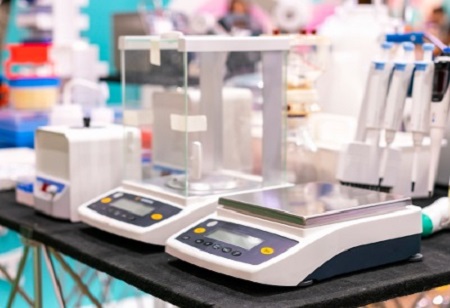With evolving market scenarios, different industries such as healthcare,
pharmaceutical and more, are increasingly facing challenges in regards to
standardisation of products and the exact composition of samples. To quantify the mass of items, including solids, liquids, and tissues, laboratories are now quickly adopting intelligent
laboratory balances and scales. Monitoring a sample's weight or mass is an important step while conducting an experiment, and it is often examined once more after the last phase.
Moreover, a sharp rise in research and development studies at institutions also with developing
biotechnology and medical industries are fueling the demand for laboratory balances and scales. Today, the market for laboratory balances and scales is also expanding due to the widespread use of these instruments in places like jewellery stores and art galleries.
Increasing demand for laboratory balances and scales in turn is creating new space for novel innovations. In fact, technological advancements have been a rising trend of the laboratory balances and scales market, reports Markets and Markets. Today the industry massively leverages software and innovative solutions like hand gestures.
In this article we have listed three most innovative progress that are raising the bars in terms of precision, accuracy and control.
Data Connectivity
The need for connecting a laboratory balance to other devices and equipment is increasingly gaining traction in lab operations. Regulators now promote the use of cutting-edge tools and software to guarantee that electronic data is captured properly and stays that way over time. Due to this, a variety of sectors, including the biopharmaceutical and consumer goods industries, have invested in digital solutions including electronic lab notebooks and laboratory information management systems (LIMS).
Following the ALCOA (attributable, legible, contemporaneous, original, and accurate) guidelines outlined by the authorities is necessary to achieve data integrity. An institute can determine the time and method of a certain data collection with the use of attributed data, which also promotes transparency. Additionally, techniques exist to guarantee that readable material has been permanently stored in a readable format.
